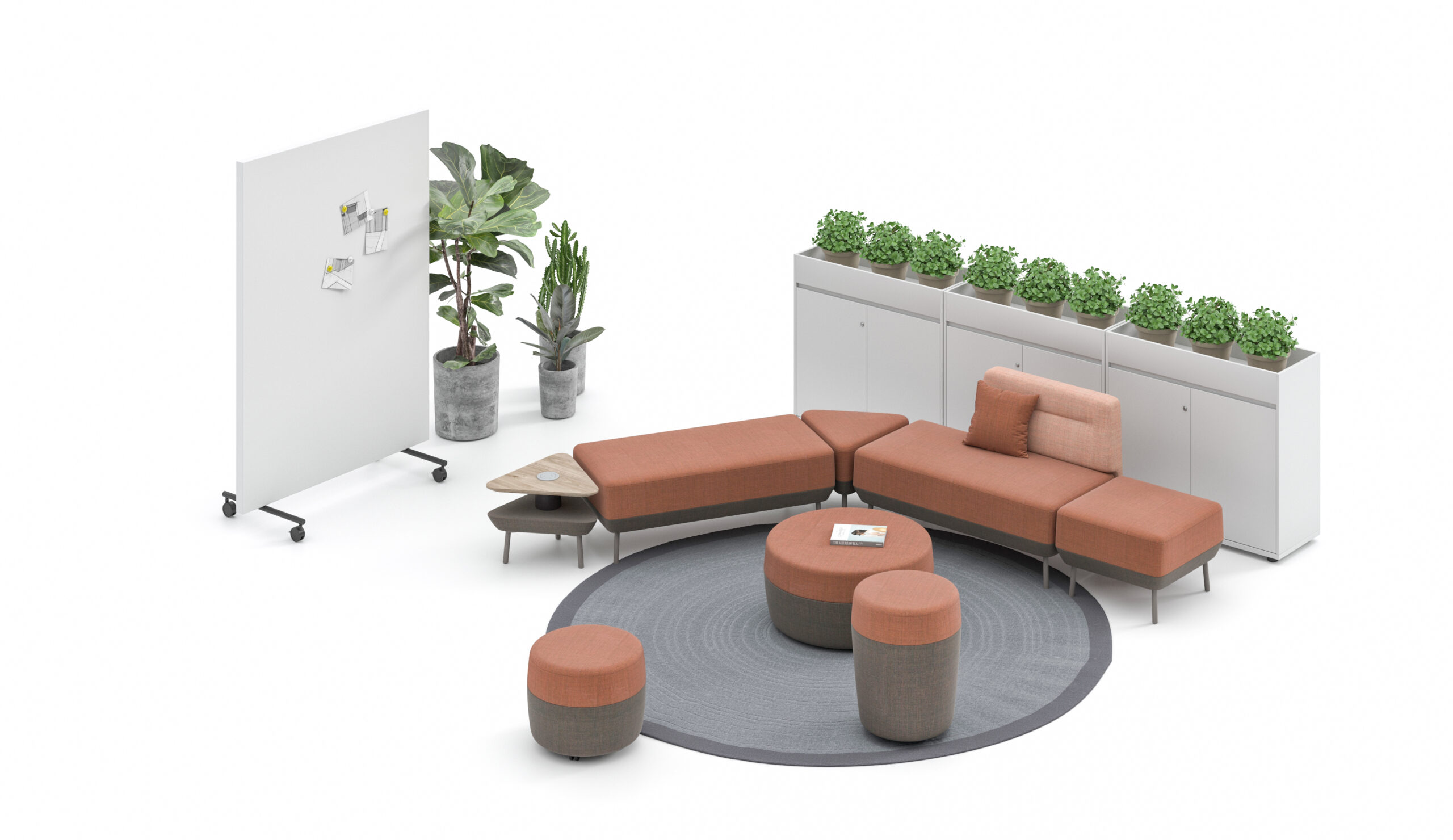A collaborative workspace is a physical or virtual location that allows individuals from different organizations or departments to collaborate on the same activity or objective by utilizing resources such as audio and video. A collaborative workspace strives to increase teamwork, innovation, engagement, and productivity among team members. A workplace collaborative space can take various forms, such as a combination of private offices and communal common areas, or a room with audio and video equipment.

Better space utilization: Collaborative workspaces bring people together in a common area. In doing so, they reduce the amount of physical space required to accommodate individual personnel. As a result, it decreases costs, maximizes available workspace, and encourages greater floor space utilization.
Improved employee socialization: A fundamental benefit of a collaborative work setting is socialization. When employees share the same immediate workspace, it is much easier for them to get to know one another and form personal ties. Companies should also encourage this type of casual conversation. The close friendships formed as a result of everyday collaboration contribute to a higher grade of work, both individually and as a member of the team.

Better business agility and flexibility: Workers benefit from collaboration space as they try to stay up with the fast-paced business environment. Employees can complete jobs rapidly in collaboration with their colleagues. Without sending an email, the graphic designer might solicit feedback from a copywriter. Instead of scheduling a time, date, and location independently, the front-end developer and database engineer can collaborate on a problem.
Increased productivity and motivation: The inspiring aspect for teams is one of the many advantages of collaboration. Isolation has a negative impact on productivity and motivation. Getting employees out of their individual offices helps to restore a team atmosphere in the workplace and promotes good feelings that overcome lethargy. Employees in a group are more likely to be interested and aware rather than straining to stay awake in the early afternoon and counting the minutes until the conclusion of the workday.

Pooled talent and insight: Collaborative workspaces are frequently intentionally diverse. The cross-exposure of skills, knowledge, and job assignments emphasizes how employees’ work affects the entire company. The more workers are aware of their coworkers’ responsibilities and contributions, the better their own jobs will be. This gradually streamlines work and promotes personal professional development.
More emphasis on workplace culture: Workplace culture is vital and is heavily influenced by employee sentiment. Bringing people together and promoting daily collaboration have a significant impact on how company culture is formed. Socialization, problem-solving, and skill pooling result in a close-knit community that is more likely to adhere to the ideals that it holds dear. Suddenly, your workforce transforms into a community.

















